What Is Capsular Contracture?
Capsular contracture can happen to breast implants over time.
All implants have a capsule that forms around them.
A capsule is made up of scar tissue and it is the body’s reaction to the implant.
It is a normal reaction and it happens to all implants, no matter where they are in the body – in your hip, or your heart, in your chin or your eye.
The capsule is normal scar tissue and is nothing to worry about.
Over time the capsule (like all scar tissue) tends to contract and it is the capsular contracture that is the problem.
The problem is not with the implant, the problem is with the scar tissue that forms around the implant.
If an implant is solid like a hip implant or a chin implant, the contracture of the scar tissue does not have much of an effect on the implant.
However if the implant is soft, like a breast implant, then the contracture does have a constricting effect on the implant and this is what causes the problem.
Breast implant having been removed from its surrounding capsule, seen side by side.
Capsular contracture is a progressive condition and over time, the implant can start to feel hard, then it can start to look ’rounded’ and then it becomes uncomfortable.
That is the natural history of capsular contracture.
Capsular contracture is graded according to the following scale (Baker classification):
- Grade I capsular contracture: you cannot see or feel your breast implants (i.e. everybody has at least a Grade I capsule)
- Grade II capsular contracture: you can feel but you cannot see your breast implants
- Grade III capsular contracture: you can feel and see your breast implants
- Grade IV capsular contracture: your breast implants feel painful
No matter what the shape or profile of your implant, when the scar tissue contracts around it, it becomes spherical, like a ball.
This can make your breast look unsightly and feel uncomfortable.
For whatever reason, capsular contracture often only happens on one side which can lead to your breasts looking asymmetrical.
Capsular contracture is a progressive condition but it is usually very slow to progress.
Capsular contracture does not need to be treated and it is your choice whether you have your implants replaced.
Prevention Of Capsular Contracture
There are a number of potential causes for capsular contracture that we work hard to avoid in order to minimise the risk of capsular contracture.
Small amounts of infection around the breast implant or a collection of blood around the implant (haematoma) can predispose to capsular contracture.
We do everything we can to minimise the risk of infection with breast implants and are very careful to control any bleeding at the time of surgery.
Fortunately the risk of infection and haematoma are very low after breast implant surgery.
Using textured rather than smooth breast implants and placing the implants under the muscle has also been shown to reduce the risk of capsular contracture, but probably the most significant thing that you can do to reduce the risk of developing capsular contracture is to use polyurethane foam coated breast implants.
These implants have not been widely adopted in the U.K. but have a been used in hundreds of thousands of women worldwide.
They are controversial and like most things, they have pros and cons and you can read my blog post about them here.
I think they are good implants and I use them a lot because I do not want my patients to have problems with capsular contracture in the future, but I discuss the risks and the benefits with everyone because ultimately it is your decision as to what type of implant that you have in your body and you need to be comfortable with the choice.
Treatment Of Capsular Contracture
The good news is that capsular contracture is not a harmful condition and it is perfectly acceptable to leave it alone.
It does tend to be a progressive condition and so will probably get worse, but progression is usually slow and it can take many years for it to develop.
The bad news is that the only effective treatment of capsular contracture is surgery.
There are no tablets or creams or any other cures that have been shown to be effective in the treatment of capsular contracture.
Surgery involves removing the capsule (capsulectomy) and replacement of the breast implants.
This surgery is more extensive than the original surgery to insert the breast implants and so it is more expensive and because it is more extensive, it is more traumatic and creates more scar tissue.
Because capsular contracture happens in the first place because of scar tissue forming around the implant, another capsular contracture happens quicker after a capsulectomy and implant replacement than it does after the initial breast implant operation.
For this reason, my advice to patients is always to wait as long as possible before undergoing a capsulectomy in order to minimise the number of operations to your breast in your lifetime.
The type of surgery that can be performed on the capsule could be:
Capsulectomy
this is removal of the capsular tissue and can be partial or complete. This can be quite an extensive operation and there is a risk of bleeding that can form a haematoma and cause the breast to swell up. This would require another visit to the operating theatre to evacuate and wash out the haematoma. In rare situations, the capsule and the implant need to be removed as a single unit and this is known as ‘en bloc’ capsulectomy and you can read more about it here.
Capsulotomy
this is scoring of the capsule to release it and allow it to expand if a new implant is being placed (note, if you are changing from a silicone to a polyurethane implant, then a total capsulectomy should be performed to allow virgin tissue around the polyurethane implant to grow in to it). This is usually performed in cases where there is only a mild form of capsular contracture otherwise capsulectomy would be needed.
Capsulorrhaphy
this involves using the thick tissue of the capsule to suture together areas of the breast pocket to manipulate the shape and appearance of the breast.
This is usually required in situations where the implants are being replaced because they are not sitting well in the breast pocket.
They could be:
- Too high
- Too low
- Too far out to the side
- Too close together in the middle (synmastia)
It may also be required if the implants are being replaced for smaller implants because the breast pocket may be too big.
The other situation where capsulorrhapy is useful is where there is a poor definition of the inframammary fold. The inframammary fold is a very important feature of the breast as any surgeon who performs breast reconstruction after mastectomy will tell you.
A very important part of breast reconstruction is to recreate the inframammary fold and these techniques used in breast reconstruction can be transferred to cosmetic breast surgery if needed.
The inframammary fold is the part of the breast where a wire of a wired bra would sit. If you look at the shape of a breast, it is not simply a dome on the chest wall. In the upper part, there is a smooth transition from the upper chest to the upper pole of the breast, but it is important to avoid this shape in the lower pole.
The lower part of the breast has a defined and crisp fold which gives a natural shape to the breast as it sits on the chest wall.
This is important, not only so that the wire of a wired bra sits comfortably, but also to give a normal and natural look to the breast. If there is blunting of the sharp angle at the inframammary fold, then the breast lacks aesthetic appeal.
It can be difficult to recreate the inframammary fold in situations where it is not well defined, either following breast enlargement surgery or as a result of your natural breast shape. This can involve a combination of internal sutures and capsulorrhaphy.
Do I Need A Total Capsulectomy?
A total capsulectomy involves the removal of the entire breast capsule which is the scar tissue that surrounds your breast implant and will result in a fresh pocket for the new implant to be placed in to.
There are several factors that may influence the need for a total capsulectomy:
- Implant-related complications: If you are experiencing complications such as capsular contracture (excessive scar tissue formation around the implant) or breast implant-associated illness, a total capsulectomy may be recommended to address these issues. In the rare situation of having a cancer associated with your breast implant capsule, such as BIA-ALCL, then a total capsulectomy would be required and it is this situation that an en bloc capsulectomy would be indicated.
- Personal preference: Some individuals may choose a total breast capsulectomy for peace of mind, even in the absence of complications. This decision may be influenced by concerns about the long-term effects of implants.
- Pathology findings: If there are concerns about the presence of abnormal tissue or if the surgeon suspects any pathology within the capsule, a total breast capsulectomy may be recommended. The removed capsule can be sent for pathological examination to provide further insight.
What Are The Risks Of A Total Capsulectomy?
It is worth noting that a total breast capsulectomy is a more extensive procedure compared to a partial capsulectomy. Not only does it create more bleeding and more scarring, which could lead to another capsule forming more quickly in the future, but there are also more risks.
We always aim to leave your natural breast tissue behind and only remove the scar tissue of the capsule itself, but there will inevitably be some breast tissue removed during capsulectomy. The more of the capsule that is removed, the more breast tissue and volume that is removed and this may make your breast smaller and reduce the amount of natural tissue covering the implant and increase the risk of being able to feel the implant or seeing the edge or rippling.
There is an added danger when performing a total capsulectomy when the implants are placed behind the muscle. The back wall of the implant will be sitting directly on your rib cage and if your capsular contracture is stuck to your rib cage, there is a risk of making a hole in the covering of the lungs when removing the posterior capsule. This can lead to a pneumothorax, and while it is only a very small hole that may be caused which will usually heal itself with minimal intervention, it is another thing to consider.
Do I Need A Capsulectomy If I Am Not Having Implants Replaced?
The most common problem with capsular contracture is the fact that it makes the breast feel hard. This is because the implant is made of soft, pliable silicone gel and the scar tissue contracts around this.
If the implant is removed, then the scar tissue no longer has anything to contract against and so the breast will no longer feel hard and the capsule itself does not need to be removed if you are not replacing implants.
If you have any concerns about your capsule for instance if you are worried about breast implant illness or ALCL, then you may want to have your capsule removed at the same time as having your breast implants removed. This could be in the form of a total capsulectomy or an en bloc capsulectomy. You can read about en bloc capsulectomy here.
Want To Know More About Capsular Contracture?
If you have any questions about capsular contracture or if you are worried about your breast implants, then you can get in touch with us here.
If you would like a free copy of our Brochure, then you can request one here.
You can also see Mr Staiano, our director, on Instagram and Facebook Live every Tuesday evening at 7pm, so you can ask questions there or post your questions to [email protected] beforehand using the hashtag #AskJJ.

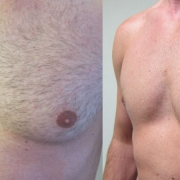


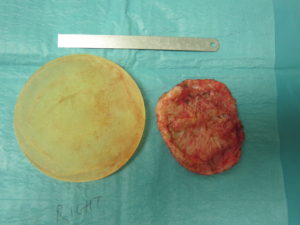
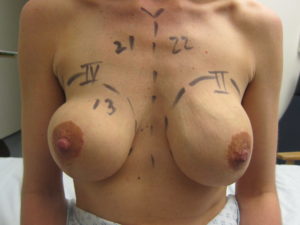
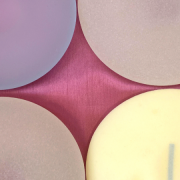

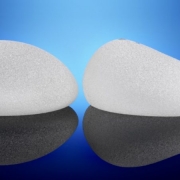
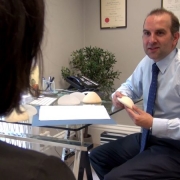



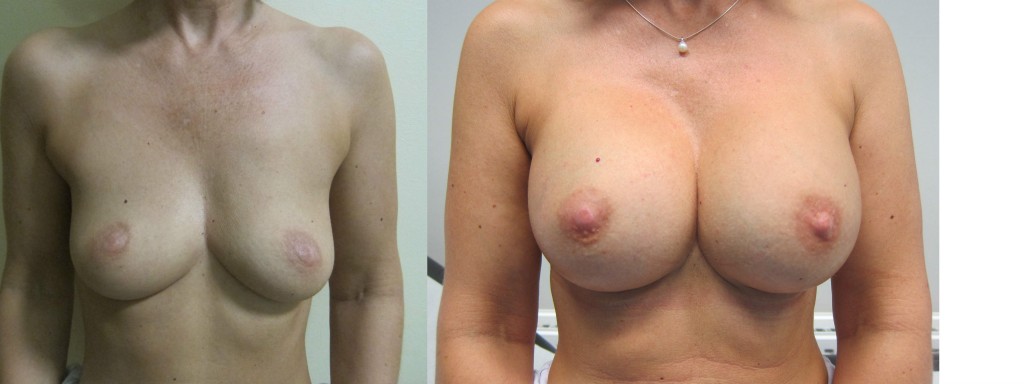
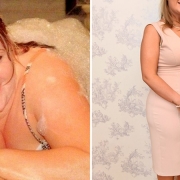



#askjj
Read Jonathan's book now!
Jonathan is on a one man crusade to revolutionise the image of cosmetic surgery and is passionate about spreading his message about cosmetic surgery training.